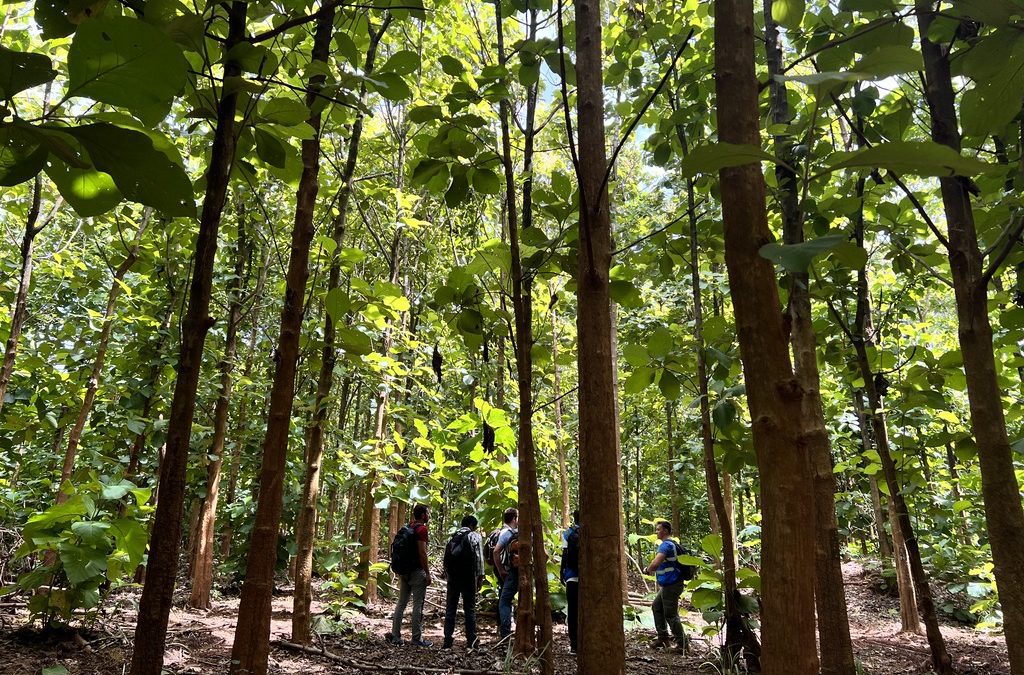Concerns escalated last year, as a series of high-profile controversies exposed apparently severe methodological flaws in various offsetting schemes. Carbon credit prices dropped significantly, although demand did recover somewhat later in the year – December 2023 saw a new record for credits purchased and retired.
A report by BloombergNEF, published in February, underlines how the voluntary carbon market is on a knife edge. In the best-case scenario, if “universal standards for high-integrity offsets” can be established, the report suggested the market could reach an annual value of up to $1.1 trillion by 2050. If confidence is not restored, however, the market’s value would barely exceed $30 billion.
Kyle Harrison, BloombergNEF’s head of sustainability research, told Reuters that a correction in pricing was probably “necessary”, given that the market had been growing at an unsustainable rate. “If we want to ensure that it does grow to the level where there’s billions of credits being traded and retired on an annual basis, we need to ensure that we’re putting in the proper framework today to allow that sustainable growth.”
The cascade of reputational difficulties that have hit the voluntary carbon market over the past year has prompted buyers to rethink their approach to offsetting.
“Companies need to be very careful,” says Jon Solorzano, counsel at law firm Vinson & Elkins. He notes that companies in the United States are exposed to a “fairly high” risk of litigation if they make misleading claims around offsets. Delta Air Lines, for instance, is facing a class action lawsuit in California over its claims to be carbon-neutral as a result of offsetting.
A California law passed last October requires companies that make claims based on carbon offsets to disclose details of the credits they purchase. Similar legislation is on the cards in the European Union.
Many will welcome a crackdown on exaggerated climate claims. But the danger is that if companies are deterred from highlighting their offsetting efforts, then they will see little benefit in paying a premium for higher-quality credits, or even in purchasing credits at all.
Reduced demand, equating to lower prices, is causing difficulties for projects that offer carbon credits, but also seek to achieve social or environmental benefits. For example, many projects that provide clean cookstoves, which can reduce deaths from indoor air pollution and remove the need for people to cut down trees for fuel, are struggling amid the downturn in carbon prices. Read more
Supporters of offsetting continue to believe that carbon removal and avoidance schemes are badly needed if the world has any hope of meeting net-zero goals.
As such, many organisations are grappling with the challenge of ensuring “high-integrity” credits are available to restore confidence in the market. In one of the most important initiatives, the Integrity Council for Voluntary Carbon Markets established a set of Core Carbon Principles to be used as a benchmark for high-integrity credits last year. It is expected to announce the first results of an assessment of methodologies against these principles this month.
Efforts to improve integrity are making “really good progress”, but cannot provide a quick fix in restoring confidence, Harrison says. While some companies would see a “huge benefit” in being able to purchase credits that are less likely to entail greenwashing accusations, Harrison says that others are “very comfortable” paying low prices for lower quality credits.
“I would expect there definitely to be a bifurcation in the market,” says Harrison, with credits trading at markedly different prices, partly depending on whether they are accredited by recognised standards.
Signs are already emerging that higher-quality offset projects can charge a premium. Tommy Ricketts, CEO of carbon credit rating platform BeZero Carbon, told Reuters that there is now a “positive correlation” between the price of a carbon credit and its rating by BeZero, with every notch on BeZero’s rating scale bringing a 25% uplift in price on average. He says that no such correlation between price and quality existed when the company was founded in 2020.
At least in theory, Ricketts notes, this should incentivise investors to fund projects that offer higher-quality credits.
He adds that schemes that have attracted the most “heat” recently were typically developed more than a decade ago, when protocols and methodologies were not as advanced as today. The downturn in spot market prices for carbon credits is mainly due to what Ricketts calls a “backward-looking” focus on the quality of these legacy schemes.
By contrast, he says that the long-term market, in which developers seek to pre-sell a multi-year supply of credits to offtakers, continues to receive huge inflows of investment. It is in this market that developers are incentivised to offer high-quality credits. “People are genuinely investing in technologies and nature-based solutions that people perceive as being high-quality in the future,” says Ricketts.
Developers, in fact, have an incentive to avoid the vagaries of the spot market and focus instead on offering a long-term supply to a buyer willing to pay a premium.
At Mere Plantations, a commercial forestry venture in Ghana run by a UK-based company, chief executive officer Mark Hogg says he is “pretty relaxed” about the reputational issues that have plagued the voluntary carbon market recently. Hogg had long been wary of how the carbon market operates. He only decided to start offering carbon credits around 18 months ago after finding a certification scheme, the Cercarbono Certified Carbon Standard, which he says understands the forestry sector, along with a commercial partner and auditor.
Rather than following the traditional model of selling credits as quickly as possible through the spot market, Hogg says that Mere is playing a long-term game by only offering credits post-absorption. “We’re not prepared to sell to traders and broker houses,” he says. “We’re sitting there with our credits, and we’re talking to companies that are actually using the credits, want the credits, and are prepared to pay a premium for genuine high-quality material.”
Purchasers are “massively under-paying” for credits bought through traders on the spot market, says Hogg. He tells us that Mere “wouldn’t even consider anything under $40” – compared with the $8-$15 it would currently receive on the spot market.
Hogg can afford to be patient, partly because Mere sees carbon revenues only as an add-on to its main commercial forestry business. He estimates that Mere may be able to generate 5-10% of its revenues from the carbon markets. By contrast, projects that base their business models largely or wholly around carbon credits may be under much greater pressure to take whatever price they can get.
Ultimately, says Hogg, education is “going to be critical” to help buyers understand the market and the value of investing in higher-quality offsets. “I honestly think that the companies that are buying carbon credits – not in all instances, but in a lot of instances – will be happy to pay a higher price for something that has certainty.”







